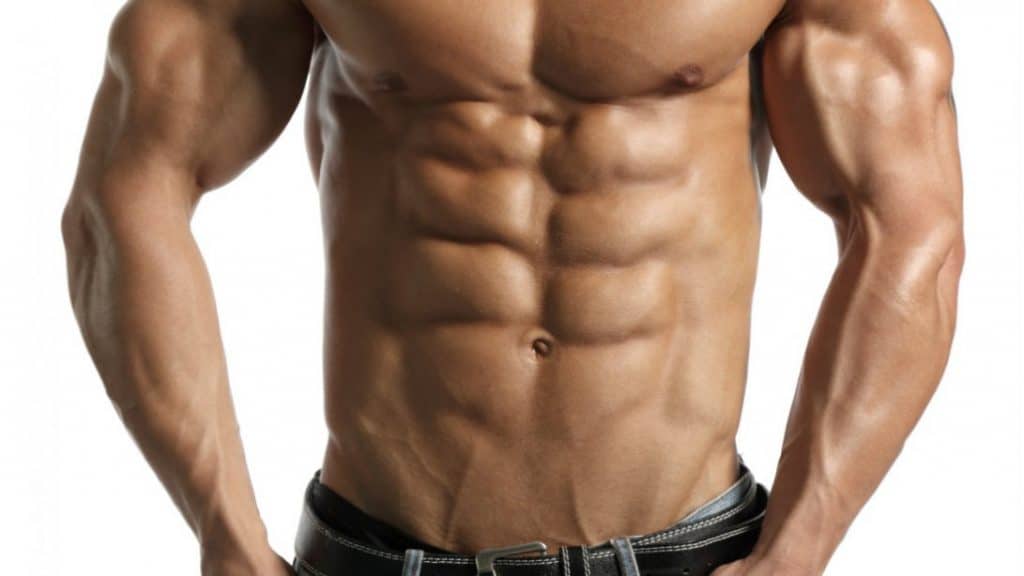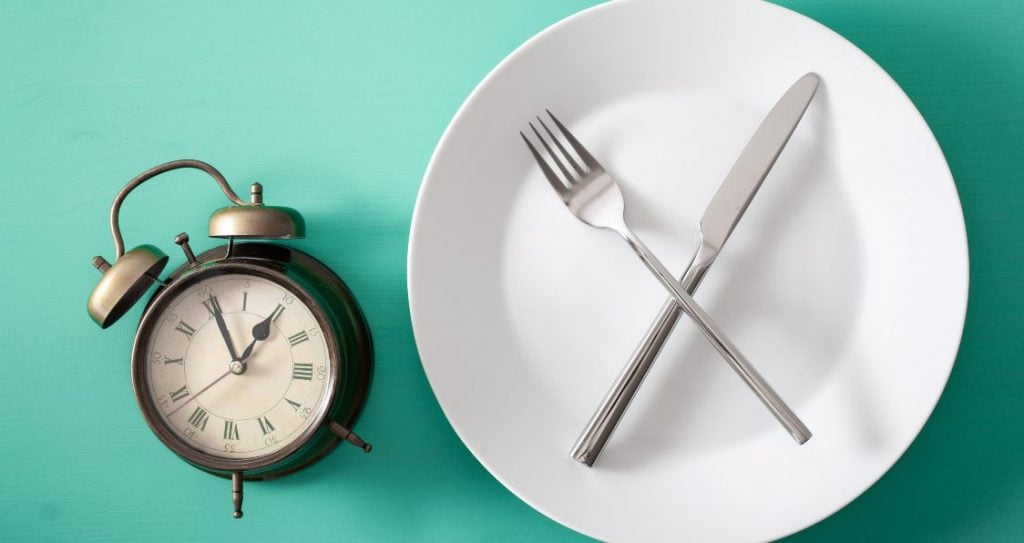Anabolic fasting combines intermittent fasting and keto protocols to help bodybuilders build muscle and get lean.
Is there a secret diet protocol that promises to help you build muscle and lose fat simultaneously? The answer may be yes! According to dieticians and professional bodybuilders, anabolic fasting is a diet that enables you to build muscle and lose fat.
Of course, most people’s goal in the gym is to either build muscle or lose body fat, and often it’s both. But building muscle and losing body fat simultaneously is hard — especially if you’re past all the newbie gains.
Fortunately, a diet known as anabolic fasting is promising for helping athletes and regular gym-goers shred fat and gain lean muscle mass.
What Is Anabolic Fasting?
Anabolic fasting combines intermittent fasting (IF) with the anabolic diet — a low-carb diet. IF and low-carb diets are popular, especially among athletes like powerlifters and bodybuilders. Individually, they both are effective in helping athletes lose fat. So you’d only imagine what they could accomplish when they join forces.
Anabolic Diet
Dr. Maruo DiPasquale discovered the anabolic diet. Dr. DiPasquale’s anabolic diet involves carb-cycling — a high-fat, high protein diet for five days, followed by consuming carbs for two days on the weekend. (Carbs are your primary source of energy and essential for muscle glycogen. Therefore, having carb load days are crucial.)
The consensus is that high-fat diets will activate the fat-burning (lipolytic) enzymes and decrease the activity levels of the fat-producing (lipogenic) enzymes, leading to fat loss (1). When you carb cycle, your body transitions from using glucose for energy to free fatty acids for fuel, aka ketosis. And the reason you keep the protein high is to ensure you prevent muscle loss while you’re burning fat. And it helps with muscle growth.
Dr. DiPasquale claims that this structure allows bodybuilders and powerlifters to simultaneously build muscle, burn fat, and garner similar effects to anabolic steroids.
Intermittent Fasting
Intermittent fasting is going through a period without eating and only having a set timeframe, known as your “eating window,” to eat. There are different types of fasting, but the most common is 16:8 — fasting for 16 hours (including sleep) and eating during an 8-hour window.
IF has been shown to blunt your appetite, aid weight loss, and provide other health benefits, such as longevity and brain health (2).
The way IF works is that after your body burns through the calories from your last meal, you’ll enter a “fasted state,” in which practitioners say your body starts to burn fat as fuel instead of glucose (a reason some research says IF is effective for helping people with diabetes since it improves insulin sensitivity).
Like the anabolic diet, IF is also supposed to help you burn fat and build muscle if you keep the protein high.
Anabolic fasting combines DiPasquale’s anabolic diet with intermittent fasting, hence the name “anabolic fasting.” Of course, since the anabolic diet and IF are both effective for reducing body fat and preventing muscle loss/gaining, you’d expect the results to be twofold when combined.
What to Eat While Anabolic Fasting
When you practice anabolic fasting, you’ll want your nutrition targets to adhere to a specific structure. For example, it’s recommended that you consume 55-65% of your diet from fat intake, account for 30-35% from protein and limit carbs to no more than 30 grams (during the 5-day low-carb phase). And you can ramp up your carbs to 45-60% and drop fat to 30-40% and protein to 10-15% of your calories during the other two days.
As long as you adhere to the nutrition targets above, there aren’t many food limitations to anabolic fasting. High-fat, high-protein, and low-carb foods include plenty of meats and fish, such as pork, steak, chicken, and talapia. In addition, cheese is a good source of protein and fat.
During the 5-day low-carb phase, you want to avoid high-carb foods such as potatoes and processed food. But you can eat whatever you want on the 2-carb load days — even pizza and beer, according to Dr. DiPasquale!
Benefits of Anabolic Fasting
Anabolic fasting has many benefits for your health and fitness goals.
Lose Body Fat
Combining carb cycling with intermittent fasting can help put your body in a fat-burning state. You’ll be in a fasted state and enter ketosis simultaneously, amplifying fat burn.
Build Muscle
Building muscle is another benefit of anabolic fasting. Since the anabolic diet requires you to keep your protein intake high, you’ll naturally build muscle since protein is critical for muscle growth (3).
Boost Testosterone
High-fat diets and intermittent fasting have been shown to spike testosterone levels.
Improve Insulin Sensitivity
IF can help you control your blood glucose levels, so it may be a beneficial diet for diabetics.
Enjoy Larger Meals
Because IF requires you to go a set time without eating, that means when you do eat, you’ll be able to consume more calories in one sitting. This can make weight loss more manageable since eating less food can be challenging initially.
Disadvantages of Anabolic Fasting
Although there are many benefits to trying out anabolic dieting, especially if you want to build muscle and lose body fat, there are also potential pitfalls.
Initially, you may experience fatigue and intense hunger. That’s because it takes your body some time to adjust to fasting. In addition, you’ll have to get your body used to be in a ketogenic state. Since carbs are your primary energy source, you can feel more lethargic on this diet, so having the days to load up on carbs is essential.
In addition, carbohydrates like fruits are filled with critical micronutrients to keep your body functioning optimally. And anabolic fasting may stop you from eating much-needed carbs filled with vitamins and minerals for your body, leading to micronutrient deficiencies.
Moreover, besides limiting carbs, the anabolic diet limits legumes and vegetables, which can put you at risk of being low on fiber. Therefore, it’s recommended that you take a fiber supplement.
Some people also experience the “keto flu” when they cut out carbs and switch to a high-fat diet and can experience constipation, diarrhea, and vomiting.
Final Word
Anabolic fasting is a diet that combines the anabolic diet (low-carb) with intermittent fasting. The anabolic diet and IF help you build muscle and lose fat simultaneously. So combining the two approaches are even more effective. Follow the guidelines and strategy in this article, and you’ll be well on crushing your 2023 fitness goals!
Follow us on Instagram, Facebook, and Twitter for more nutrition info!
References
- Cai, L., Yin, J., Ma, X., Mo, Y., Li, C., Lu, W., Bao, Y., Zhou, J., & Jia, W. (2021). Low-carbohydrate diets lead to greater weight loss and better glucose homeostasis than exercise: a randomized clinical trial. Frontiers of medicine, 15(3), 460–471. https://doi.org/10.1007/s11684-021-0861-6
- Vasim, I., Majeed, C. N., & DeBoer, M. D. (2022). Intermittent Fasting and Metabolic Health. Nutrients, 14(3), 631. https://doi.org/10.3390/nu14030631
- Carbone, J. W., & Pasiakos, S. M. (2019). Dietary Protein and Muscle Mass: Translating Science to Application and Health Benefit. Nutrients, 11(5), 1136. https://doi.org/10.3390/nu11051136










